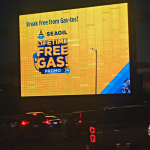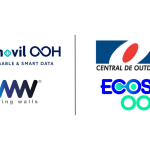By Remi Roques, General Manager, Broadsign APAC
For many of us, it feels like the digital revolution in out-of-home (OOH) advertising happened just yesterday. With technology moving so quickly, it seems impossible to keep up, much less get ahead of the game.
Now, as things start to settle, we find ourselves in the midst of a second revolution with automated trading being introduced, creating a newer industry term: programmatic digital out-of-home (pDOOH).
While ‘programmatic’ isn’t new to the media industry, it’s new to OOH, so today we’re diving into the fundamental definitions and outlining the common uses to help you wrap your head around this new technology.
What is programmatic advertising?
…And can anyone explain how it works without needing a computer science degree?
At its core, programmatic is the automated buying, selling, and delivery of advertising, or as we might prefer to put it, “buying ads with computers instead of handshakes and emails.”
Some may think that programmatic online advertising and pDOOH are exactly the same. The concept is somehow similar, but there are essential differences in their functionality and offering.
Programmatic works by being split into two sides: the buy-side and the sell-side.
The “buy” side is made up of advertisers, agencies, and demand-side platforms (DSPs).
The first two you are likely familiar with, but if you’re new to programmatic, you may not have worked with a DSP before.
DSPs are web portals that allow advertisers and agencies to buy different types of inventory from multiple publishers. To purchase any type of programmatic advertising, whether it’s across digital, mobile, or OOH, you need to have access to a DSP.
On the “sell” side, you have media owners, also known as publishers, and supply-side platforms (SSPs). Put simply, an SSP is a software which allows publishers to manage, sell, and expose their inventory to the buy side.
There are many analogies of demand and supply-side platforms. The best that I can think of are second-hand selling websites, like Craigslist in the US, Gumtree in Australia, eBay, Amazon or Alibaba. All these platforms have two sides: one side to expose the goods that you want to sell and one side to browse through the different products that are for sale. The selling tools are the supply-side platform (SSP). Sellers can upload details of their products that they want to sell, including description, pictures, prices.
The buying portal is the demand-side platform (DSP). Visitors can browse products for sale, create their shopping cart and complete purchasing transactions.
It is the same principle in programmatic digital out-of-home. In the SSP, media owners upload the details of their inventory: floor CPM, location, photosheets, photos, videos, details and audience of the inventory. Sellers also create packs of assets or what we call “deals”.
In the DSP, advertisers or agencies browse and select the inventory that they want to buy, based on geography, targeted audience, time of the day, day of the week, proximity to points of interest or other criteria. The selection of the inventory makes the campaign that they want to buy at a specific budget, number of impressions and max CPM.
The way the SSP and DSP platforms interact is simple. The buying and selling of media advertising inventory from multiple networks are referred to as the ad-exchange. Prices are determined through real-time-bidding (RTB). This programmatic form of ad buying displays the inventory available for media agencies or direct advertisers to bid on. The highest bidder wins.
As a result, all media are sold at the highest bid based on demand. It also allows for all available inventory from any OOH network to be visible to many advertisers and agencies, increasing the opportunity to sell.
Why is pDOOH complementary to buying/selling directly?
There are four key strengths to programmatic buying: agility, targeting, efficiency, and easy integration with campaigns across multiple forms of media.
The COVID-19 pandemic has taught us that advertisers need to be more nimble than ever before. When government guidelines and business restrictions change almost daily, having the ability to instantly start, stop, or optimize a campaign is invaluable.
When it comes to targeting, we’ve all heard the phrase “content is king,” but the truth is, context is everything. Programmatic DOOH enables advertisers to bid on the inventory, impressions, and moments which are most important to them, controlling when and how their campaigns are played, and to what audience.
One of the greatest strengths of OOH advertising is its complementary nature to other forms of media. A Nielsen study from March 2017* found that OOH drives four times more online activity per dollar spent than TV, radio, or print alone. When you add programmatic to the mix, the effect is compounded because of the targeting capabilities of pDOOH.
Finally, we’ve seen what programmatic has done for efficiency in online advertising. Now, even traditional media formats like outdoor can be revolutionized by automating the buying, measurement, and reporting of campaigns.
*(Source: https://specialreports.oaaa.org/wp-content/uploads/2017/05/Nielsen_042417.pdf)
How to get started with programmatic DOOH
If you are an OOH media owner, the first thing to do is to select a programmatic software partner, like Broadsign. We will onboard your inventory on our programmatic platform and assist in exposing your digital screens to the buy-side.
If you are a media buyer, you will need to have access to a DSP that supports digital out-of-home to buy inventory exposed in the SSPs.
To learn more about pDOOH, watch our OOH from HOME webinar on this topic, or have a read of our resources on the Broadsign website.
MARKETING Magazine is not responsible for the content of external sites.
An afternoon of conversations we never had, with leaders most of you never met.
Discover what’s possible from those who made it possible. Plus a preview of The HAM Agency Rankings REPORT 2024.
Limited seats: [email protected]
BOOK SEATS NOW









